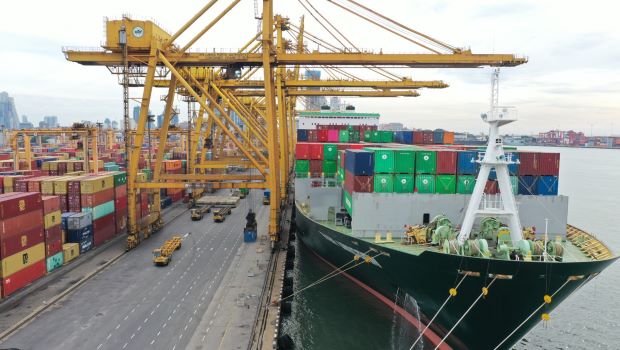Sri Lanka sails in to the breach as ships by-pass Middle East over Houthi attacks
COLOMBO – Container terminals at Sri Lanka’s Colombo port has seen daily volumes surge by as much as 80%, as the port stepped in as the transhipment hub for vessels that by-passed Middle Eastern port over Houthi attacks.
The Sri Lanka Ports Authority (SLPA) container terminals which usually handle about 5,000 to 6,000 twenty-foot equivalent units a day have seen daily volumes rise to 8,000 to 9,000 units, SLPA Chairman Keith Bernard said.
Other terminals in the port have also seen similar trends, he added.
SLPA’s Jaye and East Terminals handle about 30% of the port’s container traffic.
The rest of the traffic is spread between Colombo International Container Terminal, run by China’s CM Ports group, which can handle the largest ships and South Asia Gateway Terminals owned by the public-listed John Keells Holdings.
Mainline ships are now going around the southern tip of Africa to reach Europe without calling at Middle Eastern ports as they bypass the Red Sea and Suez Canal.
Containers are unloaded at Colombo and taken by feeder vessels to the Middle East.
Bernard said the port was limited only by the capacity to store containers until connecting ships came.
Westbound freight rates have also risen for Sri Lanka’s exporters and importers from Westbound routes.
In 2023 Colombo Port handled 6.951 million TEUs up 1.17% from a year ago. SLPA’s volumes had grown by 2% to 1.925 million TEUs.
-economynext.com



Comments are closed, but trackbacks and pingbacks are open.